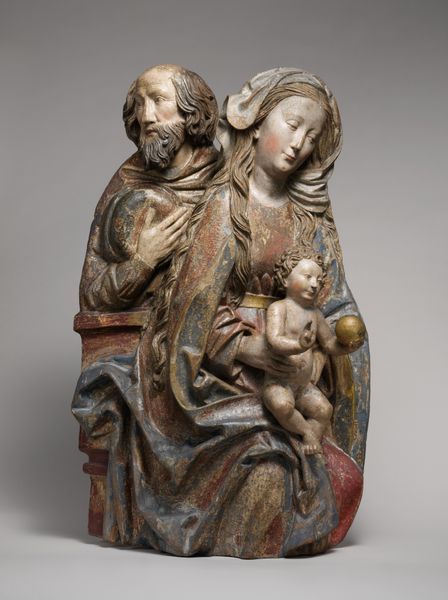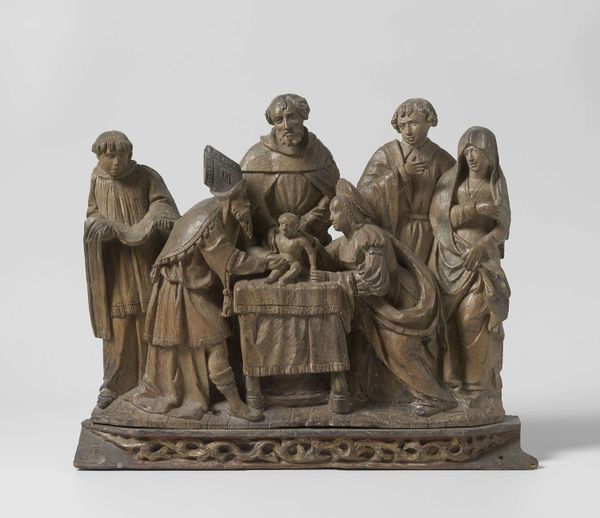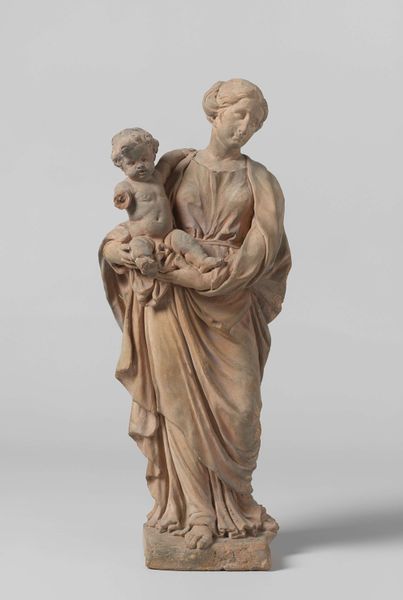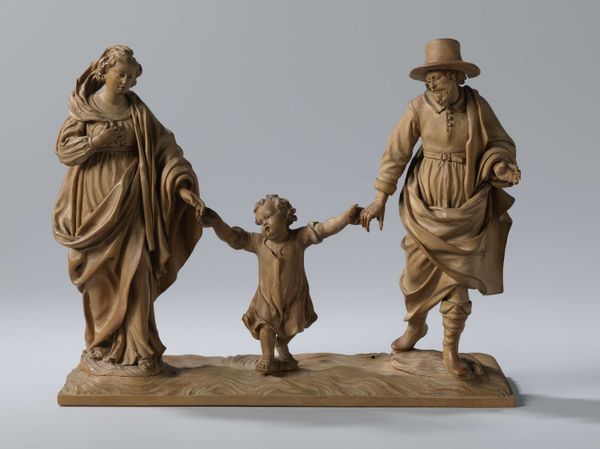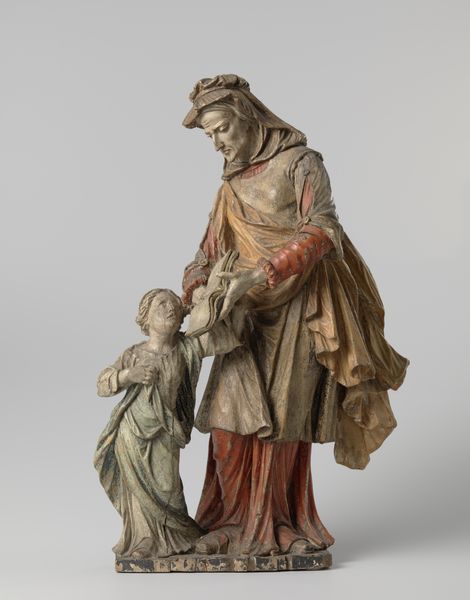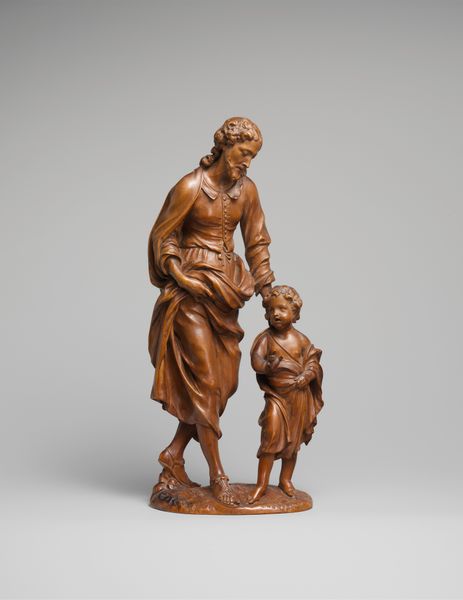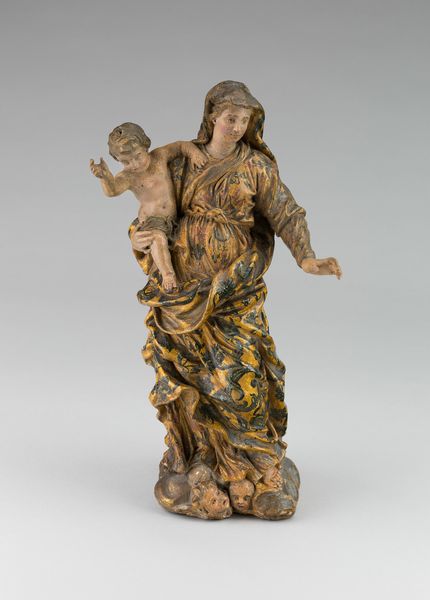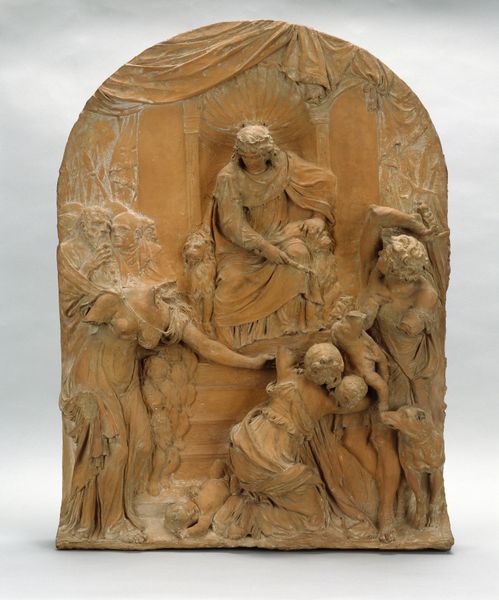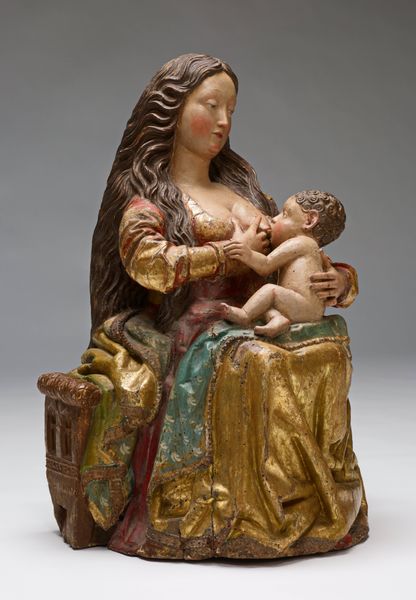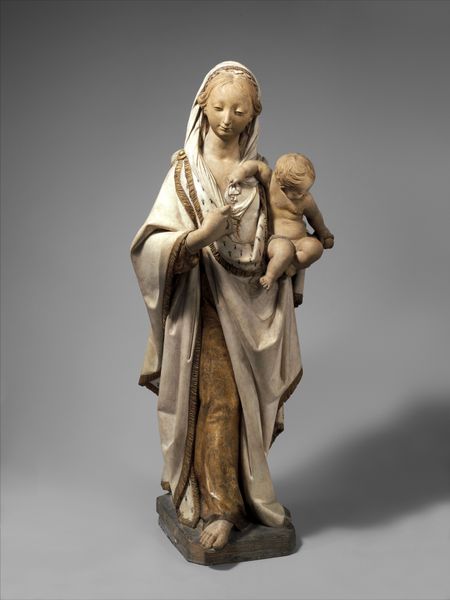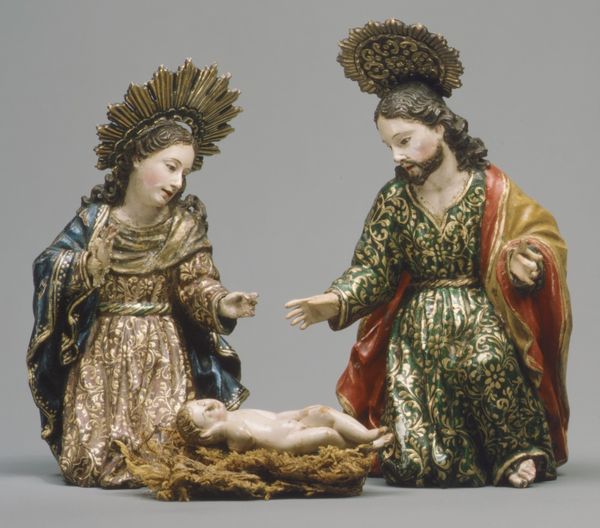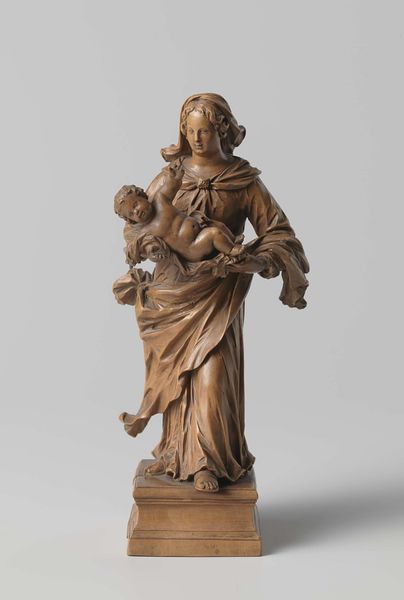
carving, sculpture, wood
#
portrait
#
medieval
#
carving
#
sculpture
#
figuration
#
sculpture
#
men
#
wood
#
history-painting
#
northern-renaissance
#
medieval-art
Dimensions: Melchior and Balthasar: 23 1/2 × 12 1/4 × 6 1/2 in. (59.7 × 31.1 × 16.5 cm) Gaspar: 22 1/2 × 9 1/4 × 5 1/4 in. (57.2 × 23.5 × 13.3 cm)
Copyright: Public Domain
Editor: This intriguing wood sculpture from around 1515-1520 by Hans Thoman, called "The Three Magi from an Adoration Group," has a very reverent and stately feel. The details are amazing. What's your take on this piece, Professor? Curator: The key thing is recognizing the environment in which art like this was created. This sculpture wasn’t just a devotional object; it was also a public display. The Northern Renaissance saw the rise of wealthy merchant classes who commissioned works like this to signal their own status and piety. Consider how the exoticized portrayal of the African Magus, a figure increasingly included in Adoration scenes during this period, played into the expanding worldview of Europeans, influenced by trade and early colonial encounters. It simultaneously celebrates the universality of Christ and reflects existing social hierarchies and biases. Does the presence of these figures expand this theme in some way? Editor: Yes, definitely. The one Magus appears more richly decorated, which could reflect a patron's values about hierarchical structure within royalty, but I am still thinking this through. Do you think that Thoman, the artist, consciously embedded all these social cues into his work? Curator: Consciously or unconsciously, artists are always responding to the cultural forces around them. Think about who would have seen this. It was likely placed in a church or private chapel and served as a visual aid for understanding religious doctrine but also reinforced the social order. Patrons had very specific expectations. Did this influence artistic decisions? Editor: So it is a mirror to a certain extent! So, seeing how artwork can offer insight into social hierarchy really makes me think about artwork, patronage and the role of artwork within Medieval society in a different light. Thanks, Professor. Curator: Exactly! Recognizing art as a cultural product embedded in specific socio-political circumstances adds another layer of depth to understanding it.
Comments
No comments
Be the first to comment and join the conversation on the ultimate creative platform.
